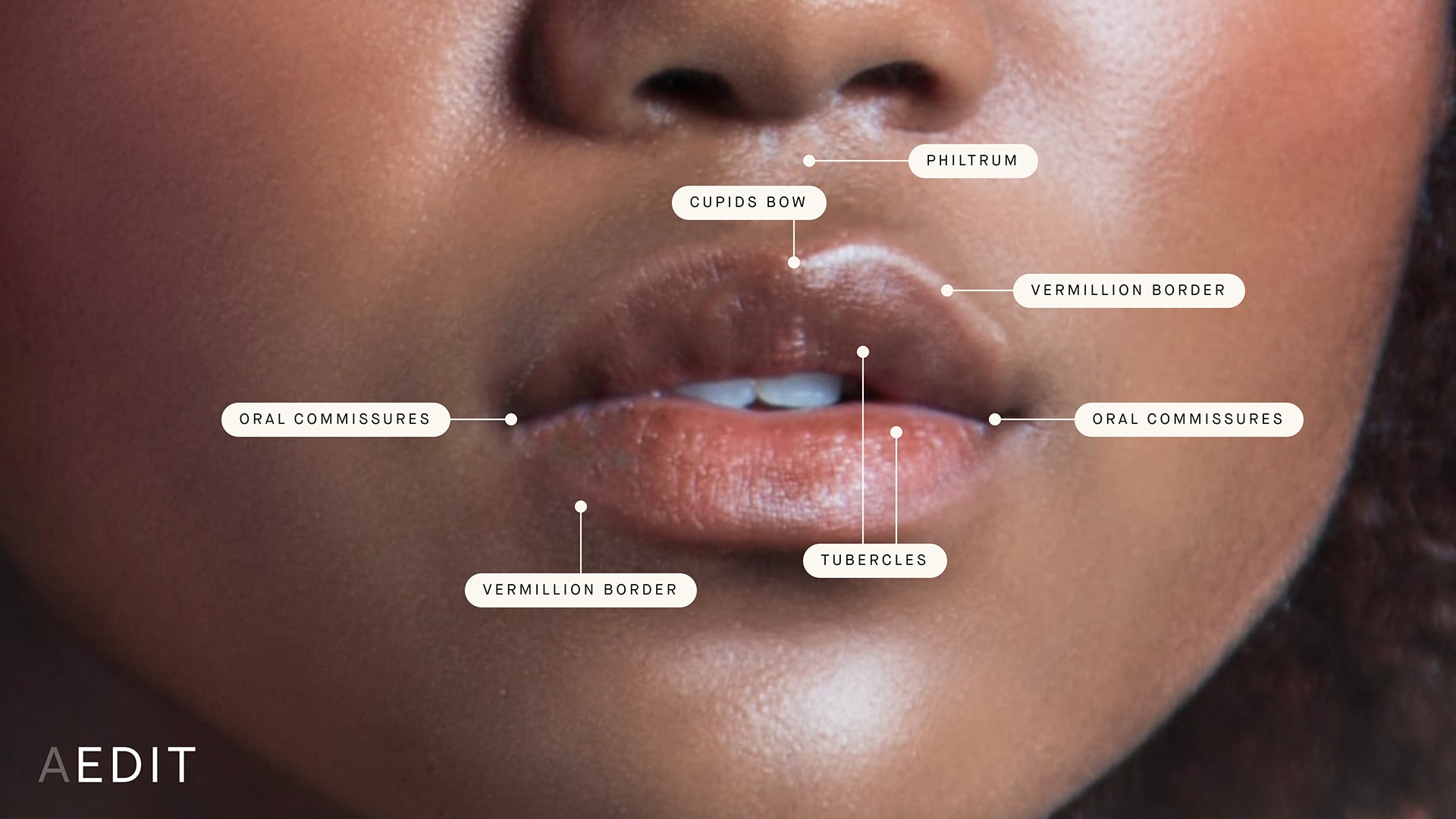
The Skinny
The Specifics
Who may consider a procedure to correct lip ptosis (drooping)?
A quick anatomy review. The lips are controlled by the orbicularis oris muscle, superior tarsal muscle, levator muscle, and mentalis muscle. The oral commissures are where the upper lip and lower lip meet at the corners. The vermilion border (white roll) separates the red lip (vermilion) from the surrounding skin. The inner part of the lip is composed of mucosal membranes.
The Anatomy of the Lip

Lip ptosis refers to drooping or sagging of the lower lip due to aging, trauma, previous surgery, certain medical conditions, or previous cosmetic procedures. Lip ptosis does not always require intervention, though patients may wish to address the tired or stern expression that often accompanies the drooping with a cosmetic surgery or procedure.
What can you expect from procedures that correct lip ptosis (drooping)?
There are varying approaches to correcting lip ptosis. Generally, surgical treatments, such as lip lifts, are considered the gold standard, as they are precise and permanent. These surgeries require no more than a few weeks of recovery time and some minimal preparation.
Non-surgical treatment options include injections of dermal fillers and botulinum toxin type-A (BoNT-A). Whether injected into the lips or part of a larger rejuvenation of the lower face (cheeks, nasolabial folds, jaw), filler can lift and shape the area by adding volume. Neurotoxins like Botox®, Dysport®, Jeuveau®, and Xeomin®, meanwhile, can be used to address the surrounding musculature. Aside from minor bruising and swelling, these minimally invasive procedures have little downtime, but the results are temporary and require regular maintenance.
When should you consider a procedure to correct lip ptosis (drooping)?
Depending on the cause of your lower lip ptosis, the ideal time to pursue treatment may vary. For trauma or surgical-related lower lip ptosis, treatment is limited only by your general health. In the case of age-related ptosis, consulting with a board certified plastic surgeon can determine which of numerous interventions may be most appropriate for your unique concern.
Why should you consider a procedure to correct lip ptosis (drooping)?
A lip ptosis procedure can restore both aesthetic and function to the lower lip. Surgical procedures can provide permanent and lasting results, whereas non-surgical treatments are temporary — though still significant. While all individuals experience some level of facial asymmetry, significant lip ptosis can be corrected to restore facial harmony and most lip function.
Surgical Procedures to Correct Lip Ptosis
Lip lifts and mucosal advancement are permanent surgical procedures that can refine, define, and contour the appearance and position of the lip.
Non-Surgical Procedures to Correct Lip Ptosis
Non-surgical cosmetic procedures typically involve the use of injectables to alter lip size, shape, and contour.
The Takeaway
A plastic surgery or cosmetic procedure to correct the droop associated with lip ptosis can help to improve lip appearance, facial symmetry, and lip function. Surgical correction provides permanent results with few side effects, while non-surgical interventions are less invasive but usually temporary.





